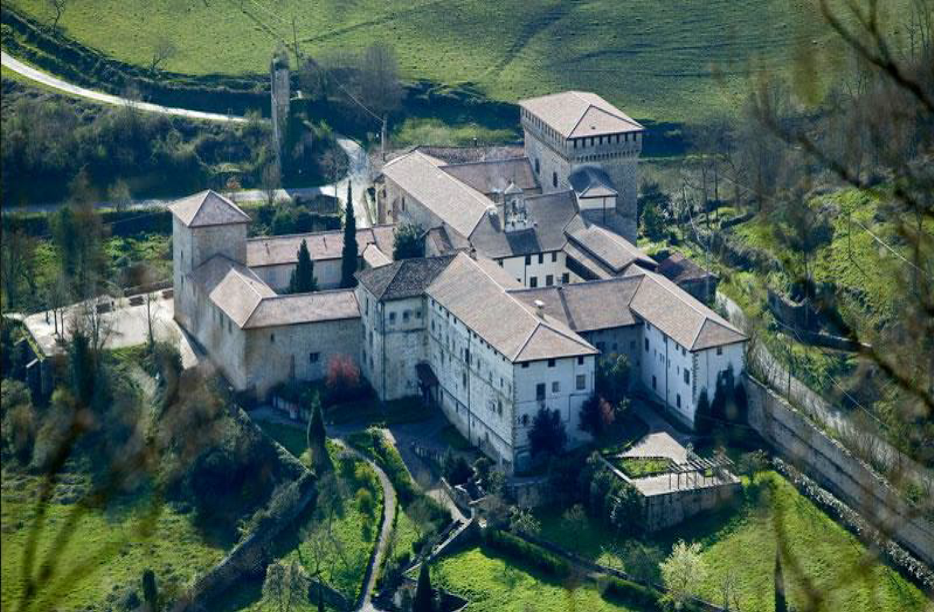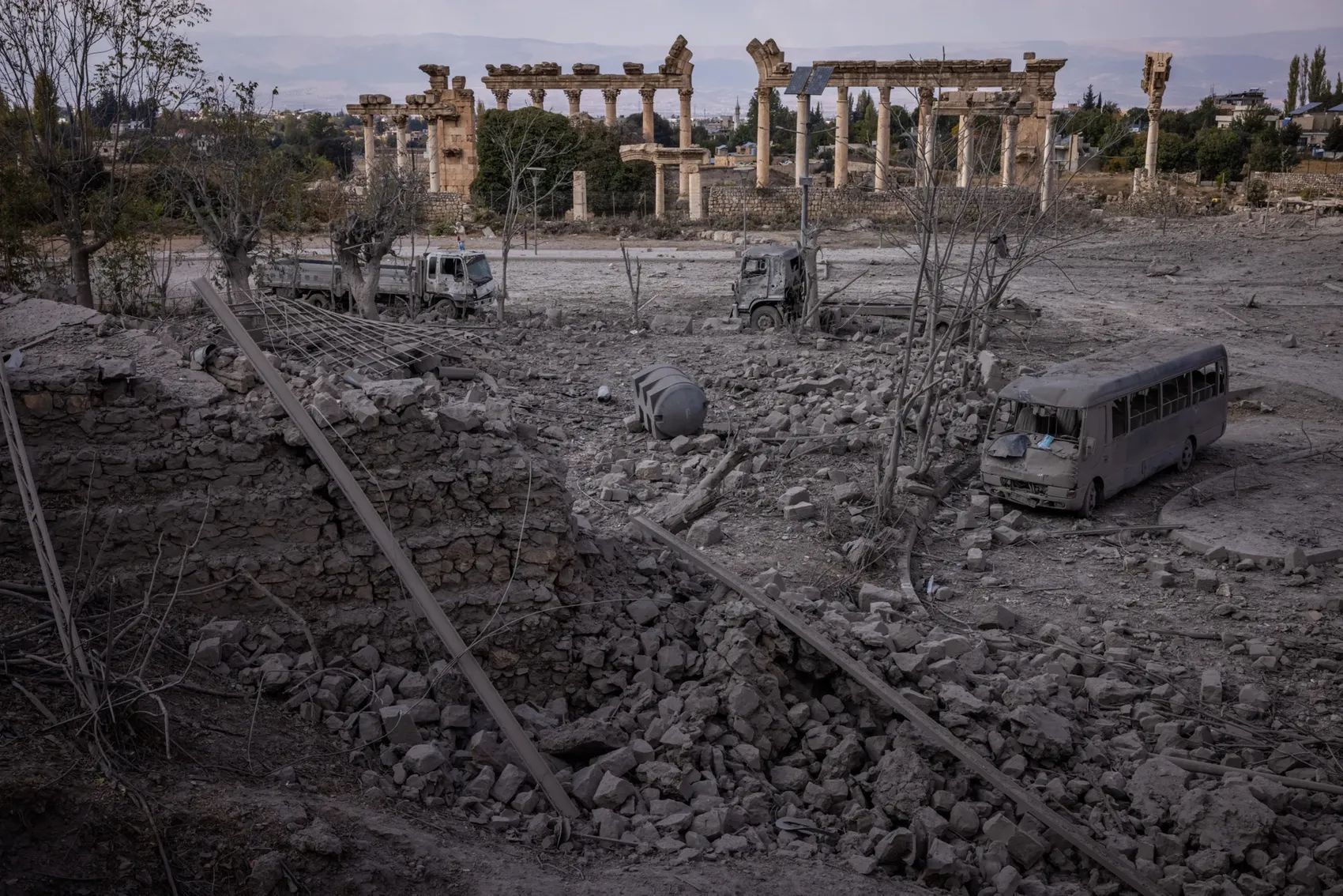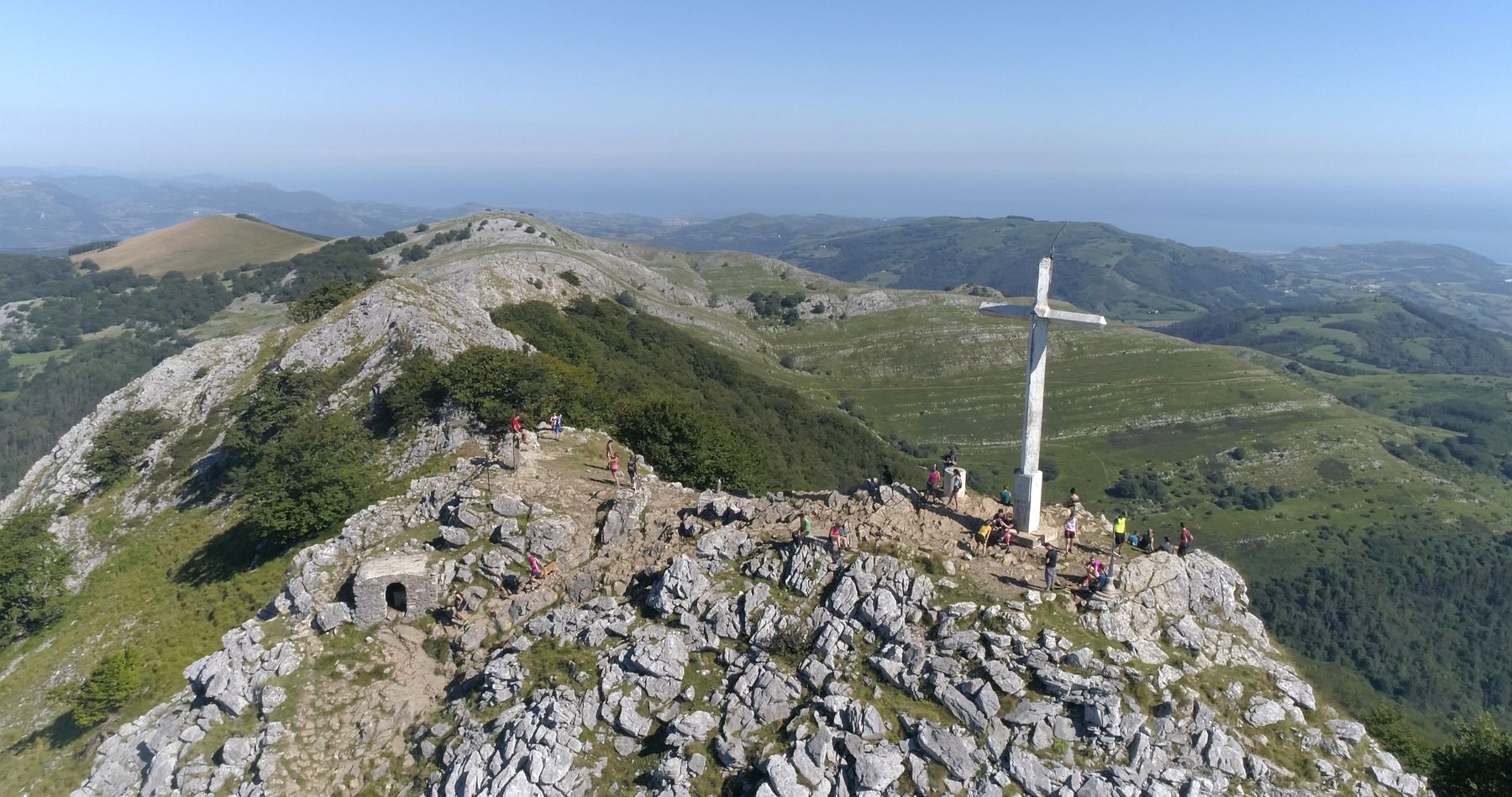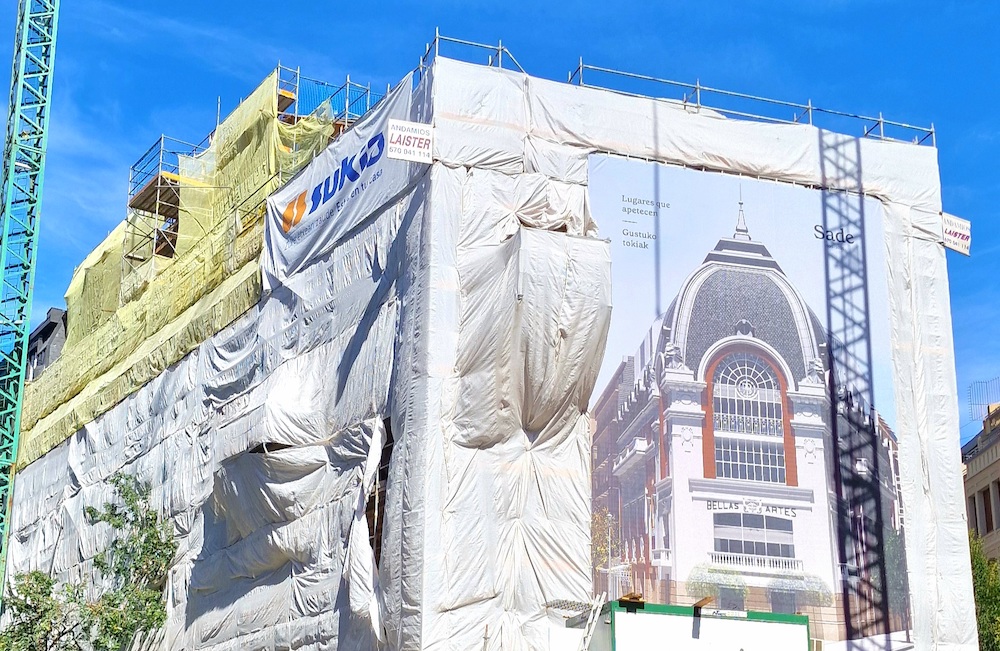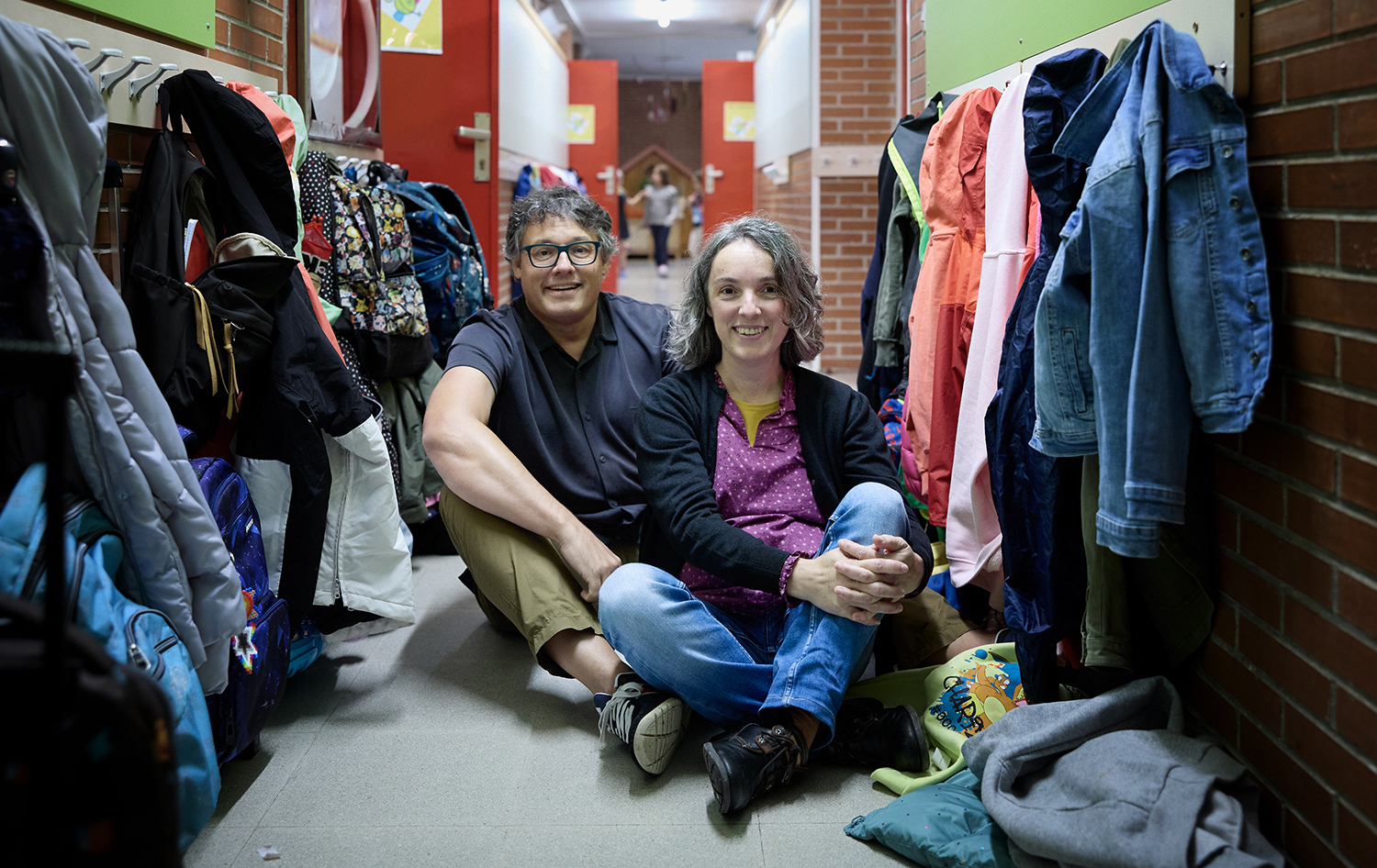"It's become a trend, but there are no compelling reasons to merge the kitchen and the living room."
- Last year I met for the first time with Ander Zangitu at the School of Word who organize in the Dinamoa creation space of Azpeitia. We reflect above all on silence. Since then he has more carefully observed his forms from the world of his trade, from architecture. Although we went to meet at the shrine of Arantzazu, health problems have led us to delay the appointment and we have met in a less silent cafeteria.

Ander Zangitu Orbea (Bergara, 1990)
He's an architect by training. Studying the career, he immersed himself in the theoretical depth of concepts driven by the political potential of architecture. It started with the intention of giving the floor to the UEU Outskirts. Writing in the journal Arquitectura y Otros, until it was interrupted. In recent years he has worked in the field of the transforming social economy, currently working in the cooperative Hiritik At.
What is architecture?
Architecture is a very complex issue. I've gone to Wikipedia to see what definition it gives it, and it says it's "science or art that deals with human habitat design." But it is a discipline that goes beyond the physical elements and totally conditions our daily lives. It transmits moral norms, among others. We could say it's like the clothes we wear. When we wear clothes or clothes, we're showing a way of being, more conscious or unconscious.
One of the most remarkable features of architecture is slow pace. Equidae designed 30 or 50 years ago today have an influence on us. That is, when an urban plan is drawn up to design a village, let us say, it can take fifteen years before it materializes and, by the time it is built, the projection itself has influenced us.
We have not been able to get together in Arantzazu, but you proposed to meet me there. Why?
I think the architecture of the shrine of Arantzazu is a good example to identify the silences. On the one hand, because silence has a great physical presence, but at the same time, because the building itself also shows different silences in its forms and spaces.
Vitruvius said that good architecture should have three balanced characteristics: utilitas, utility; firmites, robustness; and veins, beauty. In today's architecture, this is not true. Our equidae are solid, but I doubt the usefulness we give to spaces and beauty is also built from a very concrete place. Here comes the question of where our needs and desires remain in these architectures.
The shrine of Arantzazu is very well designed, but not only that. That very presence of silence I have mentioned is not felt on other occasions. It is true that, as in all buildings, there are rules that can be related to silence, but this is an architecture that has been given time: how the use of space is designed, the materials that are used, the light… Today we live very fast architectures that respond to immediate needs.
I find these looks important in the back, because they allow us to see how it was built before. Everything was raised at a different pace, our current architectures are very noisy and we are disturbed by silence.
What if Arantzazu was built in another environment?
In this case the building itself has a great symbolic burden. For some it is nothing more than a church, but in silence, behind the building there are many things. In the 1950s, the Church paralyzed all works, among other things because the apostles that Oteiza proposed were not the ones that the Church proposed. In this sense, there has always been an ideological clash with the building.
It is a beautiful building for the church, it is in an emblematic place and has history, but at the same time, today tourists see it as part of the trajectory of the film Eight Basque Surnames (Eight Basque Surnames), for example. It is an architectural policy and this building is currently in a dialectic war. Very few people will know, for example, that the first unified Basque standards were agreed there or that Jakin magazine was published there during the Franco regime. Or when they went to close Egunkaria, other Civil Guard cars would go to Arantzazu to carry out the arrests. Arantzazu keeps many silences.
.jpg)
On more than one occasion he mentioned what is silent edificios.La
architecture, beyond physical things, gathers many invisible things and silence is one of them. You can feel or perceive. I think equettes are one more tool to build our bodies and our lives. In this sense, Michel Foucault, in his book Surveiller et Punir (Observe and Punish), refers to micromers and speaks of disciplinary architecture. Disciplinary architectures aim to establish discipline and order, as well as to punish or reward.
The Church is a disciplinary institution. It guarantees the power relationship between the priest and the believers and that is where the rule is built. But it can be extrapolated to the teacher-student relationship of a school, to the doctor-patient relationship of a psychiatrist… or to the housing itself. There are certain misconceptions that are passed to us in silence on a daily basis, but that have a great influence on our bodies.
Could you give me a concrete example of these influences?
If we walk into a bar and sit at a table, we're sure to look at the door, not the back of it. It is a security issue, it allows us to control the situation. And coming back to the disciplinary institutions, how we are in schools: the professor is on the board, many times at a height, like in the churches, and we all repeat what he says.
The underlying objective in these architectural forms is the homogenization of society. Let us all feel and be equal, like a block. Thus, bodies that are left out of normal are neutralized and imprisoned within canons.
Architecture has always been raised from a universal body. It has always been to protect the human being, but it has always been a white, normative, bourgeois and swan man, in general.
You mentioned housing earlier.
Today talking about architecture and not talking about housing is a big mistake. We are all well aware of the need to guarantee the right to decent housing for all, but in order to understand the current situation, as I said earlier with the Shrine of Arantzazu, a retrospective exercise must be made.
“We want a country of owners, not proletarians,” said José Luis Arrese, Spain’s Francoist Prime Minister of Housing: “In order for there to be less communists, we will make every Spanish homeowner.” In the 1950s, Arrese launched all the state machinery to build housing with a clear objective: to create gaps for the community and the working class community. To this end, large subsidies were granted to the buildings and construction material was placed at a very low price.
Instead of raising it as a right, housing was transformed from the very beginning. In 1950, 46 per cent of the population of Bilbao lived for rent. A few years after Arrese had raised these policies, there was no rental in Bilbao. All of this forces us to put on the table the concept of “property”. The right to housing that is currently claimed is the right to property of a home. It says “access to housing”, but on many occasions there is property behind it.
He comments that there are buildings that do not respond to current needs and desires.
Our precarious generation often enters some old houses that Franco has left us in heredity and that is the doubt: What needs our current housing needs to meet? What value do we give to spaces?
The needs of 30 or 50 years ago are very different from those of today. Right now, I'm seeing a supertrend and I'm a little bit attentive: people buy a house, reinvent it and put it into a kitchen and into a living room. Why is that being done? What needs does it respond to?
Why is it?The reading
here is that the kitchen has been the reproductive space of the housing and the traditional family, where the woman has built life and the family, the reform supposes its destruction. That is, it's another way of distorting what was a cardiac space in our lives and creating a gap in the collective way of being. Maybe it's my opinion, but it's become a trend to bring the kitchen and the living room together, when there's no compelling reason.
If I listed the pros and cons right now, I would point out more contradictory than positive things. Space gains the opportunity to represent light or a larger house, yes, but there's the question: Why are current homes? During the Franco regime, housing and tourism were strongly promoted, and it is no coincidence that the problem of the house today has it on both sides.
.jpg)
If they were in accordance with current needs, what would housing look like?
This data has recently been published: In the CAPV there are more registered persons (290,000 homes) than in the traditional family (289,000 homes).
So far it has been a way of reproducing the normative nuclear family and seeing that 290,000 people live in architectures that do not respond to their needs… There is the exercise. And not only must new architectures be proposed, but also the need to dismantle the old ones and to reinhabit them from the suburbs or from other bodies.
Do we look too little at property alternatives?
Deconstruction is needed around the concept of property, and then the transformative social economy gives us some clues. Properties for the use of a transfer are in operation in Catalonia, for example. An alternative to the construction of housing outside the market logic. You do not own the house, you guarantee the right to use in time X and for money X. There is no speculation and the person stands ahead of the market or the currency.
Architecture has the need to look at the transformative social economy and it's doing it, but the education that comes up in architecture schools doesn't go around. The architect needs to be omniscient, he has to know about laws, constructions, installations, lighting, water, gas, ventilation... Here no, but at European level architecture and civil construction are distinguished. The architect is more connected to art, and to installations and so on, he's the civil builder.
Are building spaces part of architecture?The built spaces are
usually private and the “public space” is left out of them. It was proposed in the 1990s as a concept of “public space” and it is no coincidence. In some cities, such as Bilbao, it was an era of great innovation and the street was called “public space”. It is through this concept that norms, prohibitions and ways of being are transmitted... Thus, public space is used as a tool for the construction of our bodies and, also, it is no coincidence, the greatest expression or configuration of virility occurs in public space. They've been built for men, where women feel strange.
There is a Spanish film, The Golden Eggs (Golden Eggs), which is the first film that tells real estate speculation in Spain and that passes through Benidorm (Alicante). The building boom of virility and architecture melts and tells the story of a so-called successful man, director Bigas Lunas. This man from the 1990s and the current architect have a lot to do with it.
How does the environment affect the building?
The environment will always influence. It influences our perception of the building, but on the other hand, the building also has reading and relationship with the environment, and that also influences. In other words, a Guggenheim in Bilbao suddenly arises at Urdaibai makes no sense.
What importance do we give to the environment? A few years ago, workshops were held in Tabakalera (Donostia) on “the city and other policies” and one on nuclear power plants. It mentioned the history behind the Lemoiz building, as the memory or story is built through the buildings. And they said that Lemoiz already existed as an indicator of a struggle or context, but we do not know that in the flysch route that joins today Refrigerator, now a natural park, a nuclear power station was planned. I found out by chance. In this sense, architecture makes a Christian story.
Where do you have the focus right now?
I think in a lot of things that we don't understand about virility, architecture has a lot to say. The prostyles, for example. In recent decades, thanks to technology, there has perhaps been a transformation and the brothels have jumped into houses or the Internet, but we are not strangers to the clubs we see on the road. These are architectures that we have identified since we were young by car with the fathers and mothers, who remain silent but are kept. Both for the support of the normative families of our society and for the fact that at one point they have also been women's jails. They're exploitation architectures, and we're very conscious.
2020. urteko udaberrian lorategigintzak eta ortugintzak hartutako balioa gogoan, aisialdi aktibitate eta ingurune naturalarekin lotura gisa. Terraza eta etxeko loreontzietan hasitako ekintzak hiriko ortuen nekazaritzan jarraitu du, behin itxialdia bareturik. Historian zehar... [+]
Desgaitasun fisikoa duen arkitekto baten alabaren etxea bisitatu ondoren idazten dut honako hau.
Desgaitasun fisikoa duten pertsonen taldeek ez dute arkitektoa maite, beraien bizitza zailtzen duen gaizkile bat kontsideratzen baitute. Gorrotoa ulerkorra da: arkitektoaren lanak... [+]
A conference for architects has just been held in Madrid to discuss the crisis of the professional architect. They have distinguished the traditional and contemporary way of being an architect. What is traditional? From the epic architect who appears in The Brutalist, where... [+]
This wedge that the announcement on the radio Euskadi to replace the bathtub with a shower encourages the commencement of the works in the bathroom of the house. A simple work, a small investiture and a great change are announced. There has been a shift in toilet trends and a... [+]
Eroso gaude ingurunea gure egoera fisiko/emozionalera egokitzen denean. Besteak ni kontuan hartu nauenean, izan gizaki bat, objektu bat, espazio bat. Erosotasunaren klabea produktu eta espazio diseinuan beharrizan handi gisa sartu da, erosotzat jotzen dena erosgarria delako... [+]
At Christmas they leave a new book on the bedside table. About the philosophy and joy of the house, recently written by Emanuele Coccia. Coccia, an Italian philosopher, has become popular in making known our connections with plants on the road to the construction of a healthy... [+]
A prestigious architect comes from London to a small Galician town. It is David Chipperfield, a building with offices in Berlin, Milan and Shanghai, and has a large team of buildings. An elegant, refined architecture, made by a Sir. The story begins in the village of Corrubedo... [+]
In recent weeks it has not been possible for those of us who work in architecture that the climate phenomenon of Valencia has not been translated into our work discourse. Because we need to think about and design the path of water in decks, sewers, plazas and building parks. We... [+]












